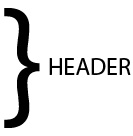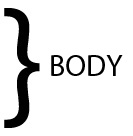How to write a Request Letter
How to Write a Request Letter
Writing a request letter is an occasional matter as you don’t request every day, at least on personal level. In an official environment it can be a daily affair. There are several different formats for writing a request letter. Multiple formats are used in formal letter writing and same goes for informal letter writing. A formal letter style like block or semi-block format are used. These styles include a date at the top, followed by name and address of the recipient, a reference line, salutation, body, and complimentary close. Serving as a guide to Requesting letters read the below mentioned and go through the examples of request letters and the requesting letter formats to get a know-how.
Request Letter Writing Tips
- Prepare an Outline – Before you actually start to write a letter make an outline of your request. What are the things that you need to write a request? These things can be documents pertaining to an official record, statement, reference, address, contacts, bills, correspondence, dictionary and whatever relevant to the request. You can make a list of things that you may require and tick them when you have them. This will save you time and energy as you will have all the essentials at hand. You will not be distracted while writing because the elements of the letter are there with you and you don’t need to search them.
- Drafting – Drafting is a rough copy of the original one. It is human to err and why not make mistakes where you have the liberty to do so. The outline of the letter comes handy here. You have everything you need so begin the letter. Don’t worry about grammatical mistakes, punctuation, spelling, sentence structure or word limit. If you are not sure of one particular format, create multiple ones and see which the best is. You can also consult your seniors in this regard.
- Be Direct – Request letters are meant to be direct but not blunt. They convey the point in the initial paragraphs or at start of the letter itself. Other supporting material comes later. No need for any unusual reference or any other matter, your main objective is to put forth the request in the best possible manner. Be assertive, confident and persuasive but not overbearing or manipulative. Your request should be clear both linguistically and visibly. Don’t use any vocabulary which is hard to understand and highlight the main points to make it appear even clearer.
- Facilitate the Request – A request is being sent so it is an important matter which needs to be facilitated. This makes the letter effective in its objective as you are leaving no corner for the recipient to make an excuse. Imagine beforehand what might be the response of the reader and have counter points. But don’t make them obvious. Offer all the possible facilities; provide them contact numbers in case they have a query or concern, provide them dates with which they are the most comfortable, if a meeting is required inform them about the possible arrangements, attach essential documents which they may require.
- Impress the Reader – Another factor to initiate a request is to impress the reader with your language and the content of the letter. But first make only a reasonable request. Put your literary skills into effect. Use the most suitable vocabulary, don’t be repetitive or annoying in your request, compliment the reader, offer assistance in return, pre-acknowledge his effort towards the request, use one type of professional font of appropriate size throughout the letter and if you know any other suggestions, feel free to inform us.
- Your Request, Mutual Benefit – Many times a request may need to be reciprocated and many times you have to make it obvious that the request is mutually benefit. This makes the request more tempting as the other party may be expecting something in return. You have to mention clearly how the request is mutually beneficial as the reader might not be aware of it. You also have to make it clear the favour will be reciprocated as and when required.
- Politeness – Be polite as you are seeking a help from someone. Your request is your need and what better way than to be polite in your request. Even if the request is to reciprocate a certain favour, you don’t need to be intimidating. Words of respect and gratitude are symbols of courtesy and politeness, always express your gratitude in the beginning and the end of the letter. Be particularly courteous and tactful as requests are generally an imposition on another's time and/or resources or talents. Put the reader at ease, and help her or him feel that responding will not be burdensome.
- Positive Approach – Maintain a positive approach throughout the letter; make it appear as if your request will be fulfilled. Make the reader feel good as if he is doing a really noble deed. Use words like these or those which represent the same meaning - ‘Your Valued Effort goes a long way’, ‘A stitch in time saves the nine’, ‘If it wasn’t for you’, ‘You are the saviour’, ‘Words fall short in your appreciation’ and so on.
- Short or Long – A simple request letter will usually have only one or two paragraphs. A request letter which requires coaxing and which has to show the ‘Reciprocating Factor’ will be a lengthy one. It is because you are persuading someone to initiate a positive outcome. Request for a donation, funding, sponsorship, waiver etc. require some lengthy content. A request letter which is in itself an acceptable direction towards the request doesn’t require much effort. A refund letter, a cheque book request etc. are bearing on the service provider and do not require much literature.
- Using Letterhead – Official Request letters require a letterhead. It establishes authority and makes it valuable towards the attention of the recipient. If you have pre printed letterhead then use that. Informal request letters don’t require it and one can use it as per one’s desire.
- Closing the Letter – Start the letter with Gratitude and end it with the same. It is a professional courtesy. At the end of your last paragraph is written, a complimentary close of the likes of ‘Sincerely’, ‘Thank you’, ‘Truly’ is essential. Close the letter by restating your appreciation and gratitude.
- Proofreading – Check for - awkward phrases, grammatical errors, incomplete sentences and spelling mistakes. Fix them with appropriate punctuation and remove dull or lifeless sentences. This is the final step; the draft will be reviewed and revised before it acquires a proper form. Read it aloud to yourself to figure out mistakes which are missed out in writing.
- Don’t forget the Enclosure – Some requests require certain documents to be attached; these can be the photocopies of documents like agreements, hard copies of email received, earlier correspondence, receipts, warranty etc. Keep original copies of all your letters, faxes, e-mails, and other related documents.
- Send Hard and Soft Copy – Though hard copy is good choice but sending it via email ensures swift delivery. Ordinary mail may take more time than email but at least you have hard and solid proof that you did send the letter. In any case, if one fails, the other will be delivered. Send your request letter by certified mail with return receipt requested to ensure the delivery.
- Timely Request – Request letters need to be sent at the most appropriate time. If a person or an individual receives a request at a time when he/she is the busiest or when there are too many constraints and or commitments, the request can be neglected. Get to know the schedule of the recipient and see which the most receptive time is and then send the request.
Request Letter Formats
Request letter - Full block style
|
Your Name Date
Reference or Subject (as required) Dear Recipient (Salutation) First Paragraph – Introductory lines about the request Second Paragraph – Details of the Request Third Paragraph – Intimation for any further communication and so on
Subscription – Thanking you, yours sincerely etc. Signature CC (as required) stands for Carbon Copy, it means the same copy has been sent to one or many people |
Request letter - Semi block style
|
Your Name Date Reference or Subject (optional) 1st Para* – Introductory lines about the request 2nd Para* – Details of the Request
Subscription – Thanking you, yours sincerely etc. Signature ENCL (optional) stands for ‘Enclosure’ which can be any related attached documents |
*Indented
Request Letter - Modified block style
|
Your Name
Reference or Subject (as required) Dear Recipient (Salutation) 1st Paragraph (aligned left) – Introductory lines about the request 2nd Paragraph (aligned left) – Details of the Request 3rd Paragraph (aligned left) – Intimation for any further communication and so on
Subscription – Thanking you, yours sincerely etc. Signature ENCL (optional) stands for ‘Enclosure’ which can be (Closing should be positioned to the right) |
Informal Request Letter Format
|
Date Recipients Name
Dear Recipient (Salutation) 1st Paragraph (aligned left) – Introductory lines about the request 2nd Paragraph (aligned left) – Details of the Request 3rd Paragraph (aligned left) – Intimation for any further communication and so on
Subscription – Yours Truly, Thanks, Thank you etc. Your Signature
|


